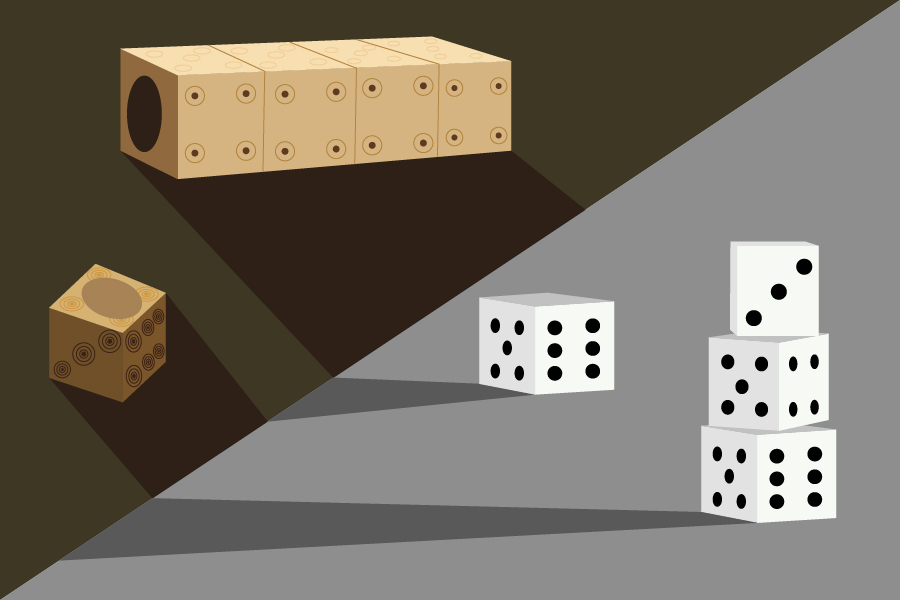
The story behind the the common game piece
Small objects are a reflection of human history, so it’s no surprise that we can learn a lot about changing worldviews through the evolution of dice. Cubic dice have been found in small numbers at various archaeological sites and date to the last 2,000 years. A recent paper analyzes the design of dice to understand social changes in history.
“We have an increasing understanding of board games found in archaeological contexts,” said Alex de Voogt, a co-author of the paper and the assistant curator at the American Museum of Natural History. “Game pieces and dice are usually found separately or in isolation. We started studying dice to answer some basic questions about their design and then [the paper] came as a follow-up when we started looking at them in more detail.”
The design of the dice isn’t the only thing that can tell us about human history. It turns out the materials used to make the dice could carry a story of their own.
“I would be interested in knowing exactly what materials these bone dice [were] made out of,” said Christyann Darwent, an associate professor in the Department of Anthropology and the chair of the Anthropology Museum. “Because they [were] probably made out of antler, they could be made out of limb bones of animals, but they could also be made out of ivory.”
Ivory at the time was a driver of the economy. When Vikings made their way to Iceland, they wiped out the entire walrus population to attain the ivory found in their tusks. The impact on the walrus population back then, which made people move toward Greenland, is seen on elephants today.
When studying objects, archaeologists look at both style and functionality of the object. In the case of dice, style would be how the numbers are put on the cube and functionality would be the shape of the cube. Normally, it can be hard to tell if an object is designed for better functionality or style. The way numbers are put on the dice doesn’t affect the function of the dice; dice provide a convenient way to separate style and function, making it easier to analyze how style and functional attributes change over the years in ways that relate to peoples’ worldviews at the time.
“So what we think is that it didn’t matter so much in Roman times that a die was not exactly a cube because the way that the die rolled and the number that came up didn’t matter,” said Jelmer Eerkens, a co-author of the paper and a professor in the Department of Anthropology.
In Roman and early Medieval times, it was thought that the world was controlled by supernatural beings or gods. Nothing was random. Everything was dictated by a supernatural entity.
“The outcome of the games were thought to be predetermined by other things, not things like chance,” Eerkens said. “As peoples’ worldviews changed and concepts like probability and chance started to enter people’s’ minds, [it] affected the way the dice appeared and they became true cubes and they also eventually came to be essentially balanced in the way that the numbers were put on the dice.”
Written by: Kriti Varghese — science@theaggie.org



